Are you looking to introduce a new chicken breed to your flock? Well, look no further than the Mystic Maran Chicken.
Popular for its incredibly dark brown or chocolate eggs, this breed is a must-have for poultry enthusiasts across the world.
The Mystic Marans has a captivating appearance that will add a sense of beauty and allure to any backyard. And thanks to its charming temperament, this breed will get along with other flog members. On top of that, they thrive both in confinement and on the range.
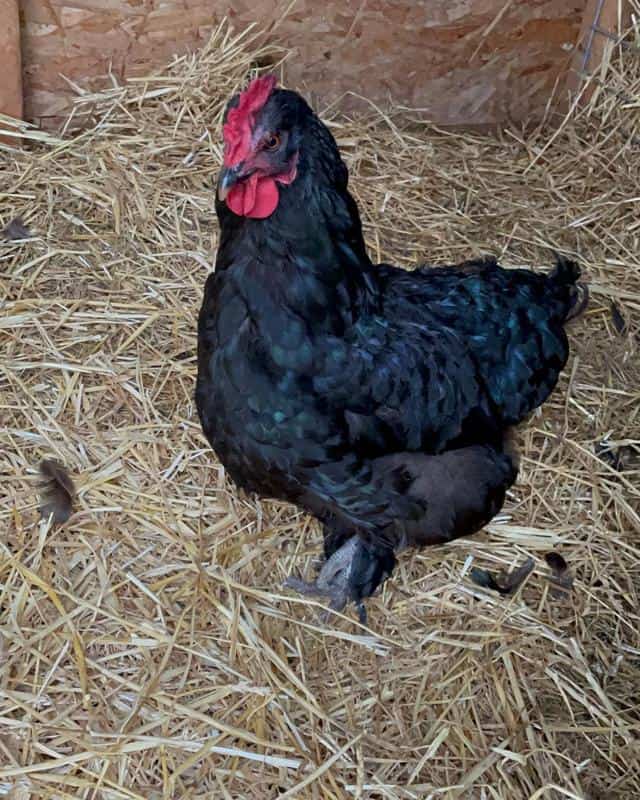
With that in mind, this comprehensive guide dives into the world of Mystic Maran Chicken. It explores its origin, appearance, care requirements, and much more.
By the end of this piece, you will have the knowledge needed to decide whether this is the ideal chicken breed for you.
So, let’s begin!
Quick Facts About the Mystic Marans:
| Common Names | Mystic Marans, Dominant Copper Marans |
| Beginner Friendly | Yes |
| Lifespan | 8 years |
| Color | Roosters: Barred
Hens: Black |
| Weight | Rooster: 7-8lbs
Hens: 5-6lbs |
| Egg Production | Very Good: 200-250 eggs per year |
| Average Production Age | 22 – 24 weeks |
| Egg Size | Large |
| Eggshell Color | Dark Brown/Chocolate |
| Temperament | Active, docile, and friendly |
| Climate Hardiness | Tolerant of both hot and cold climates |
| Comb | Single |
| Breed Type | Crossbreed |
| Breed Purpose | Egg and Meat Production |
| Breed Size | Large |
| Broodiness | Not generally broody but may set occasionally |
| Rarity | Rare |
History and Origins of the Mystic Marans
The Mystic Marans Chicken originated from the Czech Republic, after breeders crossed a Black Copper Maran male and a Barred Rock female.
The Black Copper Maran chicken breed first appeared in the early 1900s. It’s a hybrid of Landrace and barnyard chicken. And it stands out for its attractive plumage and impressive egg and meat production abilities.
As for Barred Rock (or Barred Plymouth Rock), it’s arguably the oldest American chicken breed, dating back to the 1800s. What sets this breed aside is its dark gray, black, or white barred pattern feathers. It’s also friendly, docile, and can lay 4 large eggs a week.
So, why did the breeders create the Mystic Marans?
They wanted to develop a chicken breed that combines the best characteristics of the Black Copper Marans and Barred Rock. Also, they wanted a breed that can produce large eggs with rich dark brown or chocolate coloration.
But note that not all Mystic Maran chickens lay these gorgeous eggs. Also, Mystic Marans’ egg production is lower, unlike other layer breeds.
Characteristics of the Mystic Marans Chicken
With the origin and history of Mystic Marans out of the way, let’s shift our focus to the characteristic that makes this breed unique.
Appearance
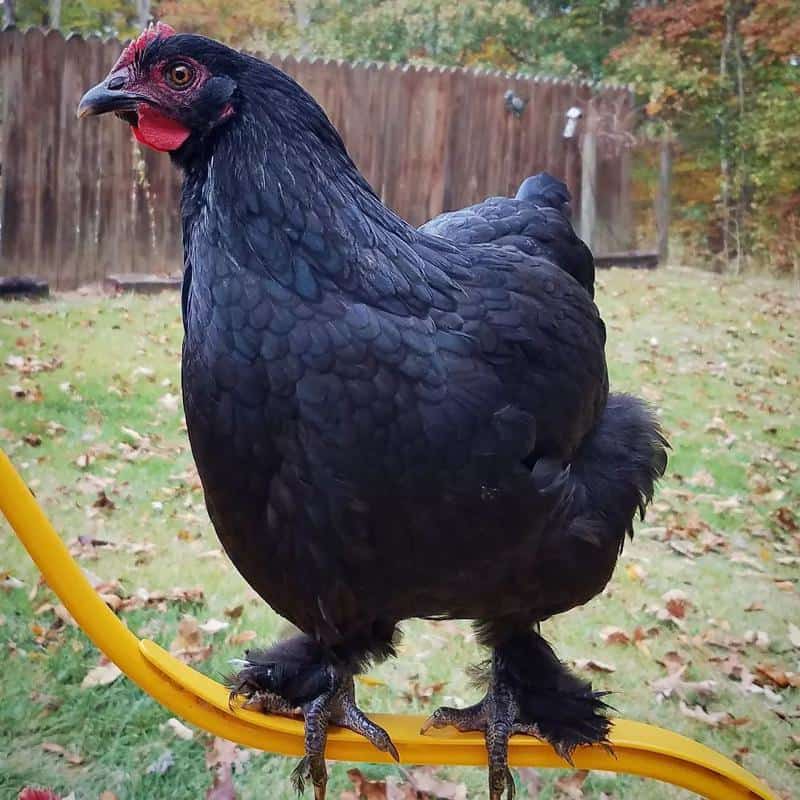
As said earlier, the Mystic Marans chickens are a crossbreed between the Black Copper Marans male and the Barred Rock female. Staying true to its name, this breed rocks a mystic look inherited from its parents.
Mystic Marans’ plumage comes in shades of black, copper, red, brown, and green, often displaying beautiful patterns.
Since Mystic Marans are sex-linked, it’s easy to differentiate between males and females, even when they are chicks.
For instance, the males have white spots on their heads, whereas the females rock a completely black coloration. While the females can sometimes have white spots, these specks will not appear on their crowns.
As the chicks grow, some may develop some copper markings on the breast, a trait that shows the breed’s relationship with the Copper Marans.
The Mystic Marans chickens have a single comb, red wattles and some might have feathered feet. Their earlobes are usually black, while their eyes are a bright shade of orange.
At maturity, females will have black feathers with deep brown shades underneath. This creates a stunning black and deep gold plumage.
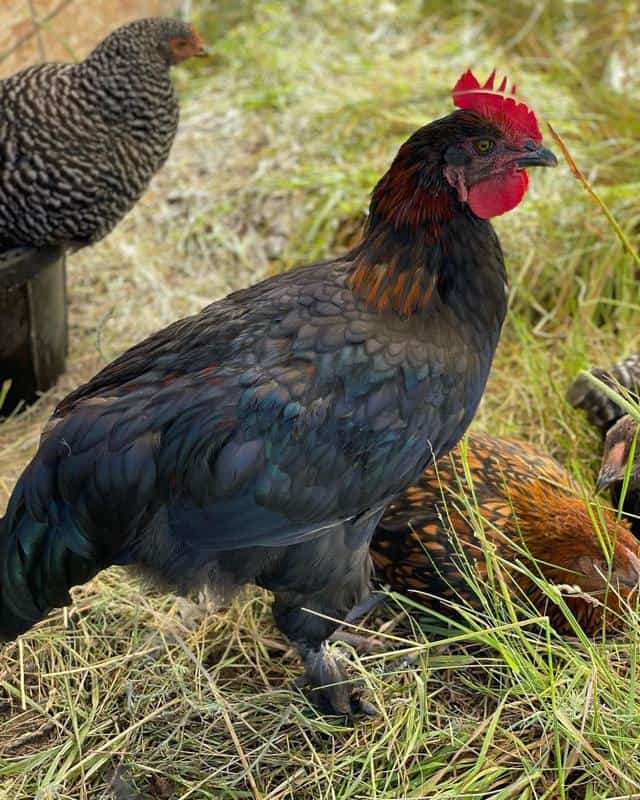
The roosters, on the other hand, will have black and brown feathers with a barred pattern on the neck and back, which adds a touch of regality to their appearance.
They are also quite large for chickens, with the rooster weighing about 8 lbs and the hens around 6 lbs at maturity.
Behavior and Temperament
If you’re beginning your chicken-raising adventure, consider getting Mystic Marans. One of their most endearing features is their Docile nature.
The Roosters and hens rarely show any signs of aggression. These chickens are highly sociable and enjoy human interactions. Sometimes, they can form strong bonds with their owners.
Because of this, they make great pets for families with kids. And the best part? You can successfully integrate them into mixed flocks without the fear of bullying. But it’s crucial to note that the hens can sometimes get protective of their chicks.
Furthermore, they are curious, often foraging and exploring their environment. This makes them excellent for free-range settings.
If you’re a chicken enthusiast but live in urban or suburban neighborhoods, Mystic Marans make a perfect choice. They’re relatively quiet as compared to other breeds.
Sure, they will cluck and crow like other chickens, but they’re not too loud. So, they wouldn’t cause any disturbance for your home or neighbors.
Breeding and Brooding Mystic Marans
Mystic Marans chickens are not the broody type. Some may go broody occasionally, but it never lasts. So, don’t expect Mystic Marans hens to sit on their eggs for extended periods.
Keep in mind that the Mystic Marans were specifically bred for the darker color of their eggshells. A brooding chicken doesn’t lay eggs. Thus, it would be deemed a loss if the chicken went broody.
It is also important to note that the Mystic Marans do not breed true. That means eggs hatched from Mystic Marans will not produce another Mystic Marans chicken. Instead, it might create something closer to the breed’s parents: The Black Copper Marans and Barred Rock.
For this reason, the Mystic Marans are rare and difficult to breed.
Production Potential – Meat and Eggs
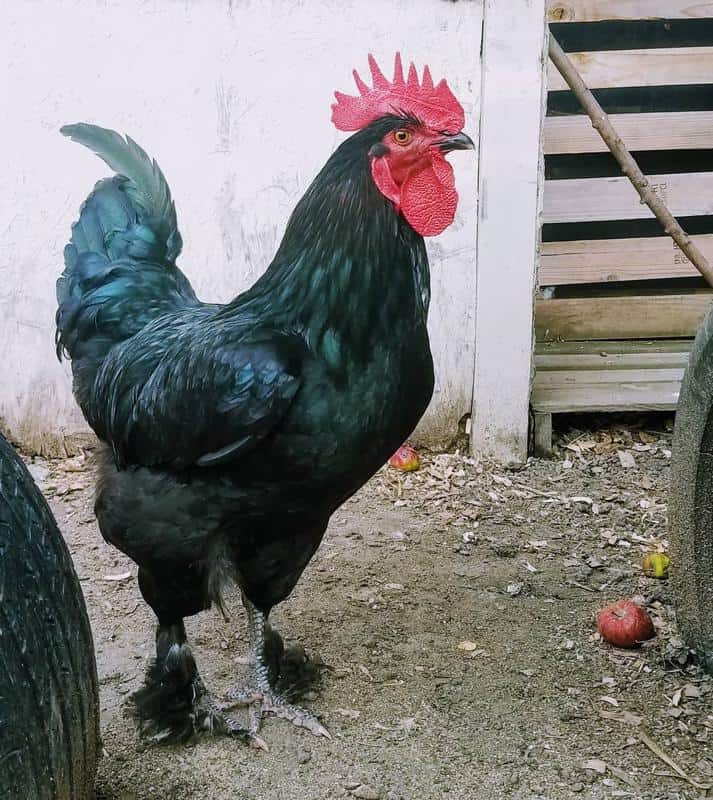
Mystic Marans hens might not be the most exceptional layers, but they can meet your egg production demands.
These chickens can produce an average of 200- 250 eggs per year. But some poultry enthusiasts claim these hens can lay as much as 300 eggs per year.
Of course, this is only possible if you provide your chickens with nutritious feed and meet their requirements. But keep in mind that factors like age and stress levels can affect the chicken’s egg production capabilities.
Like Midnight Marans, Mystic Marans eggs boast dark brown or chocolate shells, which are captivating to the eyes and the palates. But this only holds for the first 6 months of laying. After that, their eggs will gradually lighten. However, the eggs will still be darker than those from other breeds.
What of meat production?
Throughout history, Maran chickens have served as a dual-purpose breed. And the Mystic Marans are no different.
That means these chickens can provide your family with a decent amount of flavorful meat. However, they’re not economical as meat birds.
Yes, these Marans are great if you want to eat an aging layer or extra rooster. Unlike broilers, Mystic Marans grow much slower and can consume a lot of food before they reach table weight or the butchering stage.
Tips For Rearing Mystic Marans Chickens
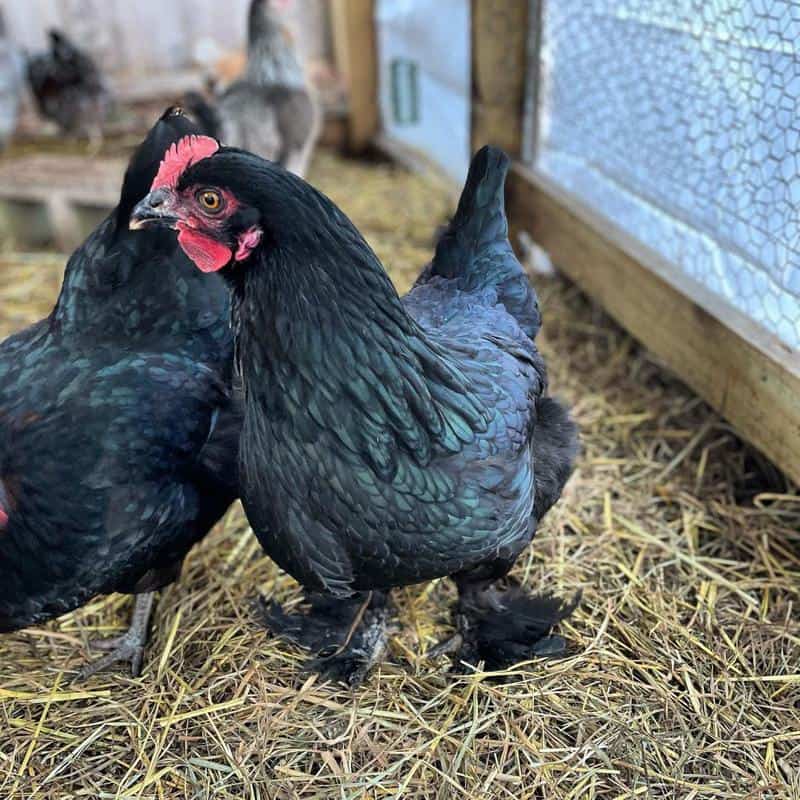
Environment and Housing Requirements
Mystic Marans chickens are quite hardy and can survive in hot and cold climates. This makes them very easy to care for. However, they’re also a large breed, and you must ensure they have enough space for them (about 4 sq ft of space for each chicken).
Before introducing Mystic Marans to your existing flock, include extra nesting boxes and perches. Reason being, these chickens enjoy roosting on higher grounds, approximately 2 to 4ft from the ground.
Another thing, they can get prickly when laying eggs. So, ensure you move the nesting boxes to a more private area, with less destruction.
Usually, Mystic Marans like roosting between two to four feet off the ground. They also get very prickly when laying eggs. Therefore, ensure their nesting boxes are a bit private for their comfort.
These birds also make a great addition to free-range poultry farming systems. They love to forage and often spend their days exploring their environment. For this reason, you need to provide Mystic Marans sufficient space to keep them stimulated, happy and healthy.
If you have to confine them, introduce a spacious chicken run. This way, you can allow them to roam around to get vitamin D, some fresh air, and stretch their legs.
Diet
Mystic Marans chicks require a lot of protein, approximately 18-24%, for the first few weeks of life. The baby chickens will also need chick mash until they reach 6-7 weeks of age. At this point, you can provide them with a pellet mash with a protein content of 16%.
At about 20 weeks, young pullets will reach maturity, and you can expect them to lay their famous dark brown eggs. But you will still need to provide them with protein and calcium because they are essential for egg development and production.
The upside is that they do not require a lot of feed and are quite good at foraging if you let them free-range. You can also add fruits and vegetables to their diet to meet their nutritional needs.
Like any other breed, Mystic Marans chickens need constant supply of clean water. Remember, water is vital for poultry metabolism. For example, it regulates the bird’s body temperature, eliminates body wastes, and helps in digestion.
When giving your chickens water, ensure you have raised the drinker from the ground. This prevents adult birds from sullying the water, which can cause infection among your flock. Also, don’t forget to change the water daily and remove potential contaminants within the coop.
Health and Safety Considerations
Mystic Marans chickens are the ideal backyard breed because they can thrive in cold and hot climates. What’s more, they are more resistant to diseases and illnesses as compared to other hybrid chickens.
However, they despise total confinement. When confined in a little space, they can get lazy and add body weight, leading to several health issues.
Besides that, their feathered feet and legs can prove disadvantageous. How?
You see, the feathers create a suitable environment for scaly mites, which are challenging to treat.
The feathers also increase your chicken’s susceptibility to bumblefoot. Though not fatal, you should isolate and get your chicken treated before it spreads the disease to the rest of your Marans flock.
Let’s not forget that the bird can pick up mud (combined with poop) and drag it to its nest and on its eggs. To prevent these issues, we recommend you clean your friend’s feathered feet and legs occasionally.
If you free-range your chicken, keep your backyard free from mud, leftover foods, and other contaminants that might risk their health.
Read More:
Bottom Line
As we wrap up, Mystic Marans is a stunning chicken breed that blends beauty and productivity. Its friendly nature and affectionate behavior make it an ideal chicken for families, especially those with children.
And if that’s not enough, Mystic Marans chickens mix well with other breeds and rarely show signs of aggression. They are also excellent foragers and explorers and thrive in different environments.
The only downside is that they require lots of space in the backyard to roam around. Failure to do that, they might become lazy, gain weight and even develop health complications. These birds also take a long time to mature, making them less economical than meat chickens.
Despite these, Mystic Marans promises you a constant supply of enchanting chocolate-brown eggs and companionship. But that’s if you provide them with a suitable environment, a nutritious diet, and regular care.
So, do you think Mystic Marans will make an excellent addition to your flock? Tell us in the comment section.
